There’s much more to Central Norway beyond Trondheim. If you're in the city for more than a couple of days, add some variety to your stay with one of these recommended day trips.
Trondheim is one of Norway’s great historic cities. Home to the magnificent Nidaros Cathedral, once a medieval pilgrimage site, and Kristiansten Fortress, which has watched over the city since the 17th century, it offers plenty for curious travellers.
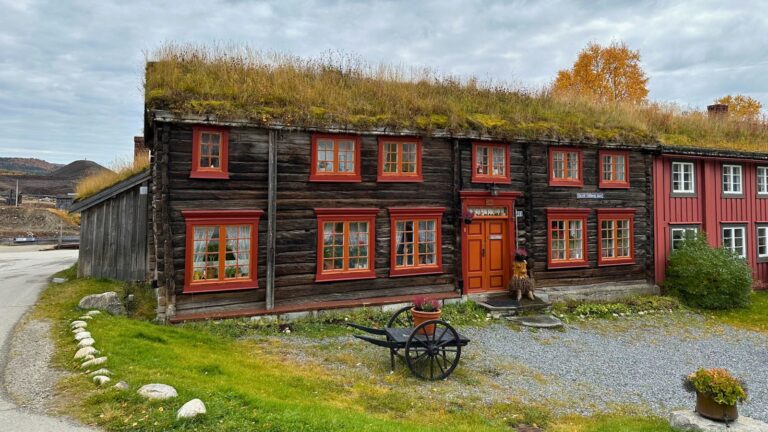
With so many things to do in Trondheim, you can easily fill two or three days exploring its history, culture, cafés, and waterfront neighbourhoods. But if you’re staying longer, you might find yourself wondering what lies beyond the city.
The good news is that Central Norway is full of rewarding places to visit, from industrial heritage towns to mountain resorts, historic battlefields, and even another UNESCO World Heritage site.
Driving gives you the most flexibility, but trains and buses run from Trondheim to many of these destinations. Some of the trips are quick and easy; others take longer and work best with an overnight stay.
However you travel, a day out from Trondheim is a chance to see another side of Norway.
Table of Contents
Short Trips from Trondheim
If you don’t want to travel too far, there are also some rewarding half-day trips right on Trondheim’s doorstep.
Just beyond the city streets, Trondheim has a vast outdoor playground in Bymarka. Covering more than 80 square kilometres of forest, lakes, and trails, it’s the go-to escape for locals in every season. Both the tram line and bus 18 trundle from the city centre up to the woods.
In summer, Bymarka is ideal for short hikes or longer rambles. Trails lead past tranquil lakes where people fish, swim, or simply sit with a packed lunch.
A favourite destination is Gråkallen, the highest point in the area at 552 metres above sea level. It’s a gentle climb that rewards you with sweeping views back across the fjord and the city.
In winter, Bymarka transforms into a skiing paradise. More than 200 kilometres of prepared cross-country trails criss-cross the forest, many of them floodlit so you can ski even on dark evenings. Equipment hire is available in the city if you want to give it a try.
Whether you’re looking for a quiet stroll or an outdoor workout, Bymarka is the easiest way to experience Trondheim’s friluftsliv culture.
Sitting in the middle of the Trondheimsfjord, Munkholmen has played many roles through the centuries. Once a Benedictine monastery, it later became a fortress, a prison, and even an execution site.
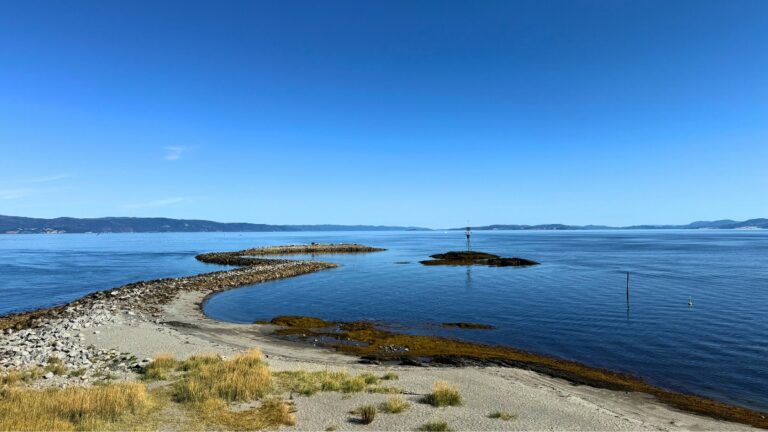
Today, it’s a peaceful island retreat, just a ten-minute boat ride from the city’s harbour. Ferries run regularly in the summer months, with combined tickets available that include a guided tour.
The tours take you inside the fortress walls and down into the old cells, giving a real sense of the island’s layered history. But Munkholmen isn’t only about the past. On sunny days, it’s a favourite place for locals to picnic, sunbathe, or even swim from the little beach. There’s also a café serving drinks and light meals.
Because it’s so close, Munkholmen works perfectly as a half-day trip. Spend a couple of hours exploring, then enjoy the views of Trondheim as you sail back across the fjord. If you’re lucky with the weather, it may be one of your most memorable moments in the city.
If you’re curious to see what everyday life looks like in rural Trøndelag, consider a trip to one of the small villages dotted around the Trondheimsfjord. They’re easy to reach by bus, car, or even ferry, and each has its own quiet charm.
One option is Brekstad, across the fjord on the Fosen peninsula. A fast ferry makes the crossing in about an hour, so it’s doable even if you only have half a day. Once there, you’ll find a relaxed waterfront atmosphere, views over the fjord, and a scattering of cafés and small shops.
To the east, villages like Rissa and Leksvik offer rolling farmland, hiking opportunities, and a slower pace of life. These aren’t places with headline attractions — and that’s exactly the point. Spending a little time in a rural community gives you a taste of Norway away from the tourist trail, where fjord views and fresh air are the main draws.
Røros
For more than 300 years, Røros was a remote mining community. Today it’s a surprisingly vibrant community focused on sustainable tourism and local food production.
The town is incredibly well preserved, and as you stroll through the center you could be forgiven for thinking you’ve travelled back in time. There’s nowhere quite like Røros anywhere in Scandinavia, perhaps even anywhere in the world.
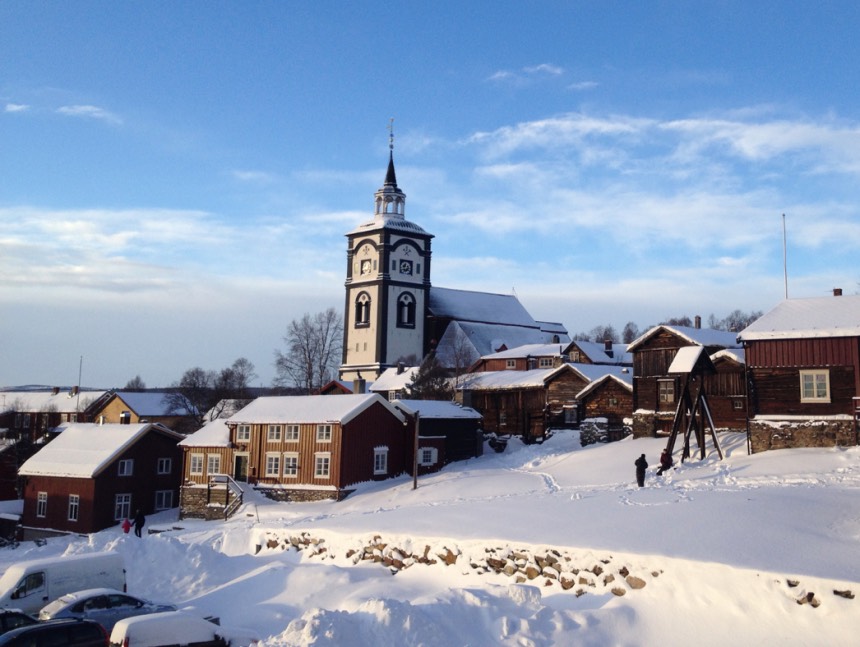
The whole town of Røros is a living museum. At the very least, take a walk along Kjerkgata or Bergmannsgata up to the Church and Copper Mining Works, before returning along the other side of the river.
This short 20-minute walk will both orient you and help you decide where to spend the rest of your time.
The Smelting House (Smelthytta) shows a 20-minute film (alternating between English and Norwegian) about the history of the town and mining operations.
Be wary of a winter visit, though. Røros is one of the coldest inhabited parts of Norway south of the Arctic and temperatures in winter can regularly drop below -20C, and sometimes much colder.
There is a fantastic Christmas market in early December, though. Although rare in June and July, snowfall is possible at any time of year throughout the region.
Oppdal
Two hours south of Trondheim along the E6 highway, Oppdal is one of Norway’s best-known mountain resorts. In winter, it draws skiers and snowboarders to its slopes at Oppdal Skisenter, while cross-country trails thread through the surrounding forests and valleys.
Outside the ski season, Oppdal is an outdoor playground. Hiking trails lead into the surrounding mountains, while rivers and lakes offer opportunities for kayaking and fishing.
The area is also famous for its population of musk oxen, which roam the Dovrefjell mountains. Guided safaris give you the chance to see these Ice Age animals in the wild.
If you’re willing to travel a little farther, continue another 50 kilometres to the Viewpoint Snøhetta, an award-winning architectural lookout above Dovrefjell-Sunndalsfjella National Park. From here, you can take in sweeping mountain views, and if you’re lucky, spot reindeer or musk oxen in the distance.
Orkanger
A short 40-minute drive south of Trondheim lies Orkanger, a small industrial town that hides a few surprises.
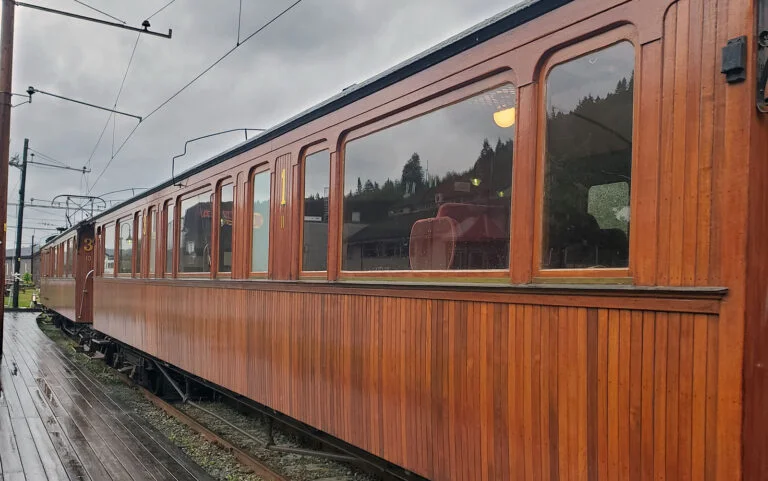
For transport buffs, the star attraction is the Thamshavnbanen heritage railway, Norway’s first electric railway, which first opened in 1908 to haul ore. Today, a preserved section runs on summer weekends, giving visitors the chance to ride vintage carriages through Trøndelag’s countryside.
If you want the full experience, start the journey in Orkanger and spend a few hours exploring Løkken Verk, once a copper mining community. Alternatively, you can just ride the train from Løkken down to Orkanger and back.
Another curiosity is the Norway Building. Designed in the style of a stave church, this ornate timber structure wowed visitors at the 1893 Chicago World’s Fair. It was later dismantled, shipped back to Norway, and painstakingly reassembled in Orkanger, where it now serves as a cultural venue.
Hell
Less than a mile south of Trondheim Airport Værnes, the village of Hell is a popular tourist draw for one curious reason. I bet you can't guess… yep, it's the name!
Whenever a train comes, a couple of tourists can sometimes be spotted getting off and taking a photograph by some of the old railway station signs.
After that, there's not a great deal to do in this residential community beyond the small shopping centre or the walk to the airport.
However, if you have some time to spare, follow the signs to ‘Helleristninger’ to see a couple of rock carvings that are believed to date back to the Stone Age.
It’s around a 10-minute uphill walk from the station and you have to make your way through a small forested area to reach the carvings.
Stiklestad
Embark on a journey through time at Stiklestad, a pivotal site in Norway's rich history. It was here, in 1030, that King Olav II—later canonized as Saint Olav—is said to have met his fate during the tumultuous period of Norway's Christianisation.
This event not only marked a turning point in religious history but also sowed the seeds for the nation's eventual unification.
Stiklestad National Cultural Centre remembers this significant past. The centre acts as a museum and cultural hub that offers a deep dive into medieval Norwegian life.
Visitors can explore an authentically reconstructed medieval farm, providing a tangible connection to the era. Throughout the year, the centre hosts a variety of events, including the famous annual play ‘The Saint Olav Drama.'
This dramatisation of the battle where King Olav fell is a cultural spectacle not to be missed, bringing together hundreds of actors on the open-air stage to reenact the historic battle and its aftermath.
Levanger
Often combined with a visit to Stiklestad, Levanger is a charming small town on the Trondheimsfjord. Its tidy wooden houses and tree-lined main street, Kirkegata, make for a pleasant stroll.
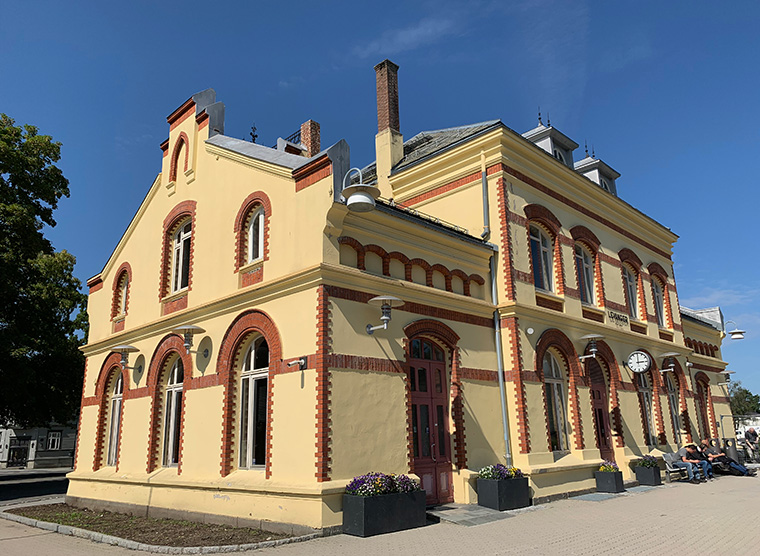
One of the most unusual attractions is Galleri Fenka, a contemporary art gallery housed in the town’s former prison. The old prison yard is now a café terrace, blending history with creativity.
Just outside town are the ruins of Munkeby monastery, a 12th-century Cistercian foundation believed to have been established by monks from England. Today, only fragments remain, but a nearby farm produces excellent Munkeby cheese, made under the guidance of French monks.
Åre, Sweden
As an alternative to Oppdal, Åre is one of Sweden's best ski resorts and they spend big trying to lure Norwegians across the border.
At 166km east of Trondheim it's perhaps a little far for a day trip, but there are plenty of lodgings in and around the resort if you choose to stay for a night or two.
Scandinavia's largest ski resort also makes a great day or weekend out in the summer. The ski trails become cycling tracks and the views from the top of the mountain are sensational.
One of the ancient trails making up the St. Olav's Ways passes through Åre on the way to Nidaros Cathedral back in Trondheim, so facilities for hiking are good.
Planning Your Day Trips
Many of these destinations can be reached by public transport, especially Røros, Oppdal, and Stiklestad. Others, like Orkanger or the Snøhetta viewpoint, are much easier with a car.
If you only have time for one trip, Røros is the standout for its uniqueness and accessibility by train. But each destination offers something different, whether you’re into history, hiking, skiing, or quirky sights like Hell.
So, when you’ve had your fill of Trondheim’s historic streets and cosy cafés, don’t hesitate to look further afield. Central Norway rewards curious travellers who take the time to explore.
If you've been inspired to explore some of the region around Trondheim, why not share your plans on Pinterest? There's a pin for that. Just hit those social sharing buttons.



This was pretty informative David, thank you. I had never heard of those cities. Question though, what if one wanted to take a relaxing weekend trip near the water, some place 1 or 2 hs west of Trondheim – staying in a cabin near the water, just chilling. What places would you recommend?
Best,
Linda (Los Angeles)
Hello David,
Isn’t there a monster bunker built inside a mountain within a few hours’ drive from Trondheim that is jointly shared by Norway and the U.S. military (and perhaps other NATO nations)? I doubt that the public would be permitted to access the facility, but it would be interesting.